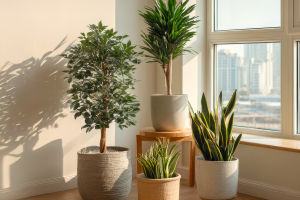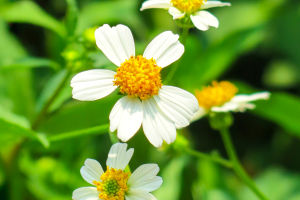You know that feeling when you walk into a boutique plant shop, see a small leaf with dramatic variegation, glance at the price tag—and blink twice because it's more than your rent?
You're not alone. Rare ornamental plants have entered a new era, where beauty, scarcity, and hype can push prices into the thousands (or even more).
Let's dive into the extraordinary world of high-end houseplants and their price tags, origins, and stories.
Not Just Pretty: Why Some Plants Cost So Much
Plant pricing isn't random. Three main factors tend to drive a plant's value up:
1. Rarity in the wild or market
If a plant mutates naturally or occurs in very limited populations, it instantly becomes a collector's dream.
2. Propagation difficulty
Some plants take years to grow from seed or are incredibly hard to propagate through cuttings or tissue culture. Time is money.
3. Aesthetic uniqueness
Striking variegation, unusual leaf shapes, rare colors—these are the plant world's equivalent of couture fashion.
Throw in online sky-high bids and limited releases by specialty growers, and you've got the perfect storm.
1. Variegated Monstera Adansonii – up to $38,000
Yes, you read that right. A single cutting of this rare plant, particularly with albo (white) variegation, once sold for around $38,000 USD at auction.
This plant is a cousin of the more common Monstera deliciosa, but with delicate fenestrated (holey) leaves and dramatic white streaks. What makes it so valuable?
• Unstable genetics: The variegation can revert, and stable propagation is difficult.
• Limited supply: Tissue culture doesn't always work, so growers rely on slow node-by-node cuttings.
• Demand explosion: Once a few influencers showed off theirs, prices skyrocketed.
Today, prices are down somewhat, but highly variegated and symmetrical cuttings still command thousands.
2. Philodendron Spiritus Sancti – $5,000 to $12,000
This is the holy grail of philodendrons. Known for its long, sword-like leaves and subtle elegance, Philodendron spiritus sancti is incredibly rare in cultivation.
• Fewer than six mature specimens were confirmed in the wild, leading to strict protective measures.
• It grows slowly and is notoriously hard to propagate.
• Private collectors and botanical gardens fiercely compete for specimens.
Even a juvenile plant can cost over $5,000—and a large, healthy one can easily double that.
3. Black Tulip – up to $15 per bulb (but priceless in symbolism)
Not all rare plants are tropical. The black tulip, especially the cultivar ‘Queen of Night,' is often cited as one of the world's rarest ornamental flowers—not just for its color, but its historical value.
Why the fuss?
• True black flowers are extremely rare in nature. Most "black" tulips are actually deep maroon or purple, making the search for a truly black tulip almost mythical.
• In the 17th century, tulips triggered one of the earliest market bubbles in history. A single rare bulb could sell for the price of a house.
• Modern black tulips are prized for events, weddings, and collectors' gardens—less for price, more for legacy.
Though not as pricey per bulb as tropical exotics, the black tulip's cultural weight keeps it firmly in the "plant royalty" category.
4. Anthurium Warocqueanum – $400 to $1,500
Nicknamed the "Queen Anthurium," this dramatic velvet-leaved beauty is beloved for its elongated, rippling leaves that shimmer under light.
But it's also infamously picky.
• High humidity and specific soil needs make it unsuitable for casual growers.
• Shipping risk is high—damaged leaves mean damaged value.
• It takes years to reach full size, and even cuttings can cost hundreds.
This is the plant that separates hobbyists from committed collectors.
5. Variegated Alocasia (e.g., ‘Frydek' or ‘Melo') – $500 to $2,000+
Alocasias have always been admired for their architectural shape, but the rare variegated varieties have recently exploded in price.
Some cuttings (especially those with stable white or yellow variegation) have sold for over $2,000. What's tricky is that variegation in Alocasias is often unstable, and growing them requires:
• Warmth, but not too much.
• High humidity, but not soggy roots.
• Constant vigilance for pests.
Think of it like trying to maintain a luxury car that's allergic to tap water.
What to Know Before You Buy
Tempted to spend a small fortune on a leaf? A few things to keep in mind:
1. Research the seller
High-value plants are often cloned or mislabeled. Ask for original photos, video, or proof of authenticity.
2. Check for stability
Some variegation fades over time. Make sure you're buying from a healthy, non-reverting parent plant.
3. Understand the care
These plants are not "set and forget." Many of them need greenhouse-level care, not just a sunny windowsill.
4. Be patient
Prices for rare plants fluctuate. What costs $1,000 today might cost $300 next year as more become available.
More Than a Price Tag
There's something oddly poetic about how a tiny, fragile plant can be valued higher than a designer handbag. But beyond the numbers, these plants represent time, care, and patience—whether from growers who spent years propagating them or collectors who nurtured them through rough seasons.
So even if you never buy a $10,000 leaf, there's joy in knowing why someone might. The next time you spot a curious plant in a shop with a surprising price tag, ask the story behind it.
You might find it's worth more than just the cost.


